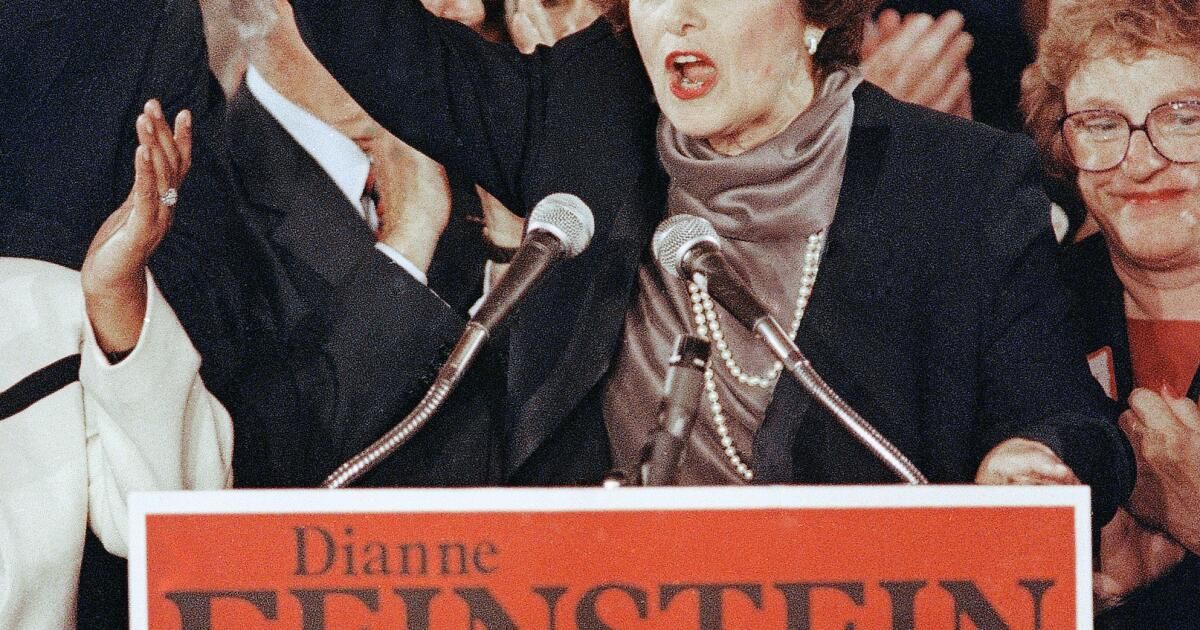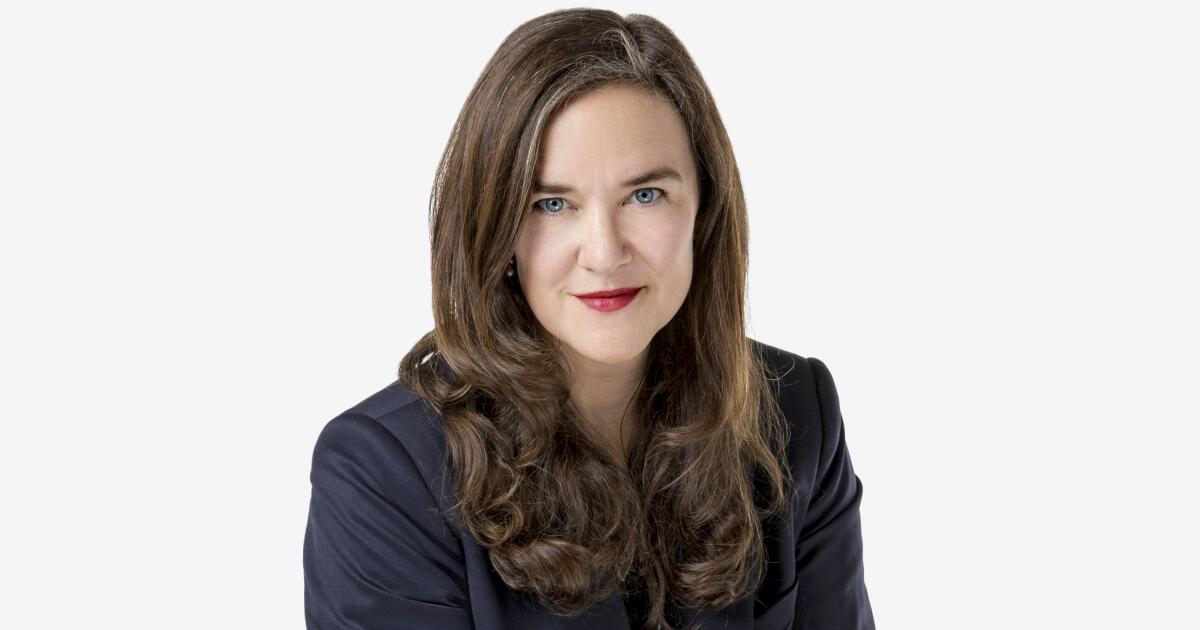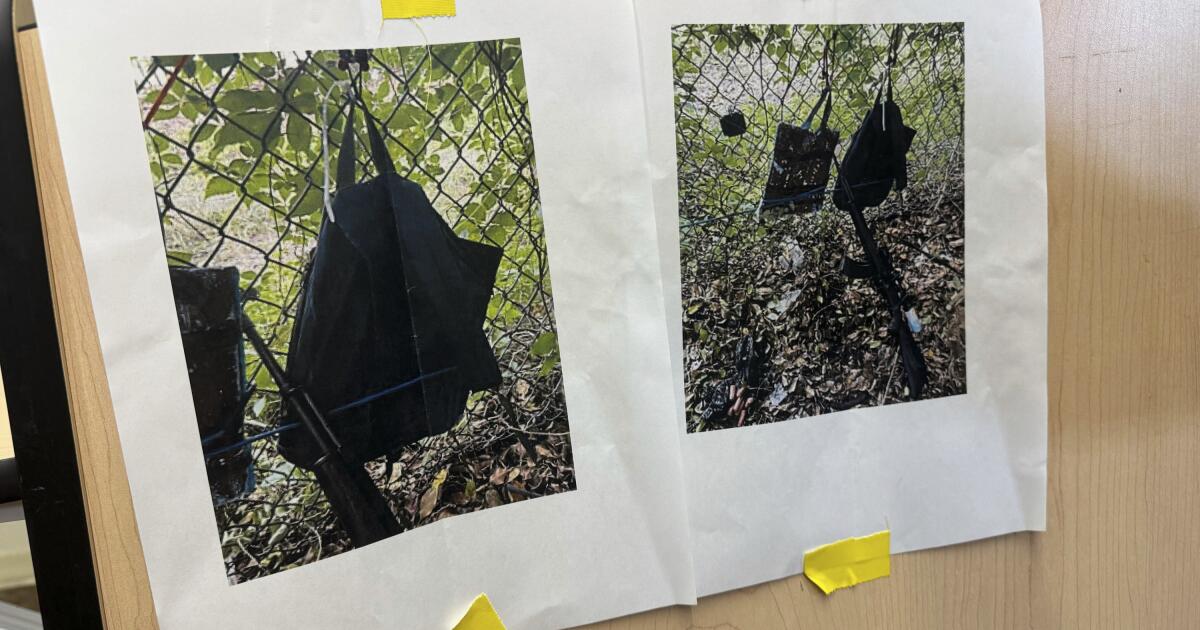In 173 years as a state, California has had 40 governors.
Democrats, Republicans, members of the Unionist and Know-Nothing parties.
Merchants, lawyers, former mayors.
A bodybuilder turned movie star. Actually, two movie stars.
But never a woman.
It is a fact that stands out as Half Dome. After all, this is a state that imagines itself as a progressive trailblazer and a bastion of open-minded opportunity, and made history in 1992 by becoming the first to elect two women to serve as US senators at the same time.
And yet, as Mindy Romero, director of the USC Center for Inclusive Democracy, said, “we still have that glass ceiling” when it comes to the governor's office.
However, that exclusively white male hegemony could finally come to an end in 2026.
Democrat Eleni Kounalakis, California's first female lieutenant governor; Toni Atkins, the first woman to lead both the state Assembly and Senateand former state controller Betty Yee All have declared their candidacies to succeed the term-limited Gavin Newsom. Each of them is a credible candidate, in what is shaping up to be a large and unusually varied field.
It is too early, of course, to evaluate a contest two years from now; Nobody knows what will happen in the presidential elections in seven months. But California voters could make history in 2026 in several ways.
Democratic prosecutor. Gen. Rob Bonta, a possible gubernatorial candidate, would be the state's first Filipino-American governor. State schools chief Tony Thurmond, a fellow Democrat who He launched his candidacy last fall, aspires to become the first black and Latino governor of California. Atkins would be the state's first openly LGBTQ+ governor, as well as its first chief executive.
All would be achievements worth mentioning.
But in a state where women outnumber men among registered voters, electing a female governor would not only fill a glaring void in the state's leadership cadre but would also end one of California's most curious political distinctions. .
There have been 49 women (30 Democrats and 19 Republicans) who have served as governors in 32 states, according to the Center for American Women and Politics at Rutgers University. Currently, a dozen states have female CEOs.
Arizona holds the record, with five women serving as governors. Kansas, New Hampshire and Oregon have each chosen three. A handful of states have had two.
Why none in California?
There doesn't seem to be any particular reason, at least not in recent decades, once women finally began to gain some political equality and achieve the stature to compete for the state's highest elected offices.
It cannot simply be dismissed as misogyny.
In addition to electing three U.S. senators, Californians have elevated numerous women to state office. Fifty of Sacramento's 120 legislative seats are held by women and about a third of California's congressional delegation are women.
The five members of the Los Angeles County Board of Supervisors They are women, and Los Angeles has a mayor, just like san francisco and dozens of other cities, from Rancho Cordova in the north to Murrieta in the south.
There is no long history of women running for governor of California. Only a handful have had a serious chance: Democrats Dianne Feinstein and Kathleen Brown and Republican Meg Whitman.
Feinstein came closest to winning. In 1990, she became the first woman in state history to earn a major party's nomination for governor. She narrowly lost. to Republican Senator Pete Wilson.
Bill Carrick, the Feinstein campaign's chief media strategist, remembers her narrowly leading the contest to Operation Desert Shield, which set the stage for the Gulf War. Support for Wilson grew as President George HW Bush united the country and formed an international coalition that ultimately beat back Saddam Hussein's invasion of Kuwait.
“You saw a big Republican surge because of that,” Carrick said.
Was it voters who embraced the Republican Party and its candidates to reward Bush and his party? Or did the dangers of war make them question the ability of a woman to serve as governor of California?
Carrick is not sure. Maybe it was both.
Back then, he said, even “some liberal-minded people” had doubts about Feinstein's political viability. “I don't think there's that kind of hesitation” today, he said.
(If we go back further, to 1969, when Feinstein first ran for the San Francisco Board of Supervisors, everyone, including her father, told her that a woman couldn't win. She proved them wrong.)
Feinstein gained some measure of revenge two years after her loss in the gubernatorial race when she defeated Wilson's hand-picked successor, John Seymour, to claim a Senate seat she held until his death in September.
Feinstein's success and others who came later opened a much clearer path for those who followed in their footsteps.
“As the years go by, female candidates are clearly having it easier than ever,” said Gale Kaufman, a veteran Sacramento strategist who has helped elect many Democratic women to public office.
“Not long ago people were asking, 'Can a woman serve as governor?'” Kaufman said. “I don't think anyone would ask that question now.”
That bodes well for those running in 2026. It doesn't guarantee that a woman will be elected California's next governor, but it seems much more likely.
It's time.












